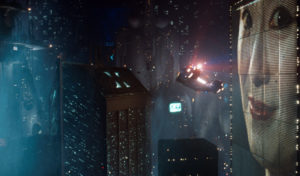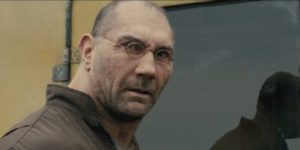 (4 / 5)
(4 / 5)
The cases of Lisbeth Slander, The Girl with the Dragon Tatoo, are not for the faint of heart or the for people that lack the ability to pay attention to the details happening on-screen. They are sharp, modern Gothic thrillers that never go easy on the characters and won’t let leave you feeling too optimistic by the end. As soon as this movie starts there is images and visual hints for the rest of the story at hand, two sisters playing chess together and a spider crawls out from under one of the pieces, their father calls them into his room and he pats some kind of machine, the sister Lisbeth takes her sister by the hand and runs away. On the edge of a balcony, the sister goes back to her father while Lisbeth takes the chance of falling out of a balcony and into the snow.
Then kicks off a wild opening sequence that incorporates key imagery of the movie and launches us into present time. It is unique, memorable and effective.
Filling the big black boots of Lisbeth Salander is Claire Foy. She fit into the leather jacket and trousers well while being given an appropriate punky head of hair. Foy’s true strength comes through when the character says hardly anything, many times in the movie she must process information, or listen intently or clearly be pushing her emotions down.
One day she gets a new assignment from a rich man named Frans Balder (Stephen Merchant), he has created a programme called Firefall which is capable of giving whoever has it full control of any missiles in the world. This, of course, was a terrible idea and only now does he regret making such a thing (say nothing of that this is something out of a Saturday morning cartoon idea). So Lizbeth has another case on her hands.
Lizbeth successfully takes Firefall and a special National Security Agent, Edwin Needham (LaKeith Stanfield), whose priority it is now on Lizbeth’s trail. One night while she is quietly bathing she hears a rummaging and men in masks are in her place and they take the laptop with Firefall and set her place aflame. Being that all this is happening there is, of course, a story here and investigating needs doing so in comes Mikael Blomkvist (Sverrir Gudnason), her lover/partner from the previous stories and head of Millenium Magazine. Along with all these players, there is the crime syndicate called The Spiders with a figure that has a very important connection to Lisbeth’s past.
The original Millenium Trilogy was published posthumously from the author Steig Larsson but alas an endearing character and success mean that nothing is really sacred so the books were continued with different authors. I actually cannot attest to the quality of the book because I have not read them. However, the question is raised about being true to style, characters voice, and message. This is a world of victimized women, brutality, information is true power and there are either bittersweet or certainly no happy endings.
Being the established tone of this world director Fede Alvarez was a good choice to take the reigns as director. With his remake of Evil Dead and Don’t Breathe, he is a creator that has a talent for creating haunting images and visceral experiences. These are Gothic tales, where moments from the past carry over to the present and such such images must be striking and say something about the story, I won’t describe them, you will see them and understand. Also, there are more than a few visceral encounters throughout and you feel the impact of the punches and bullet shots, with the use of a shaky camera that always knows what to focus on and sharp sound design, hearing every tightening rope, gasping breath and shattering glass.
The whole stories construction is well built. Characters have their own voice, serve their purpose as players in a game, yet you still believe they are real people, there are a MacGuffin and plenty of twists and turns throughout. Though there are just a few times when things play too neatly for Lisbeth and the concept of Firefall is not the most feasible.
Heightening most of the scenes is the score by Roque Banos. He invokes Bernard Herman’s score in Psycho with mostly strings played fast to produce a shrieking effect. Other times he brings in drums to emphasize the rhythm and time sensitivity of the scene at hand.
This world and these characters have become like Sherlock Holmes, Zatoichi, James Bond or Batman. Where it is fertile landscape for stories, though they are distinct and the characters are defined but also malleable enough for other actors, writers, and directors to come in and give their interpretation of the world.
If you are a fan of any of the other movies then this one will also appeal to you. If you care for hard-hitting spy thriller then this one will check all the boxes also. If are a fan of both of those but also care for deeper subject matter in terms of characters and why they do what they do then this one, again is for you, if not then pass on by when you buy your ticket, but if so get right on it!



 (3 / 5)
(3 / 5)

 (1 / 5)
(1 / 5)








 (5 / 5)
(5 / 5)